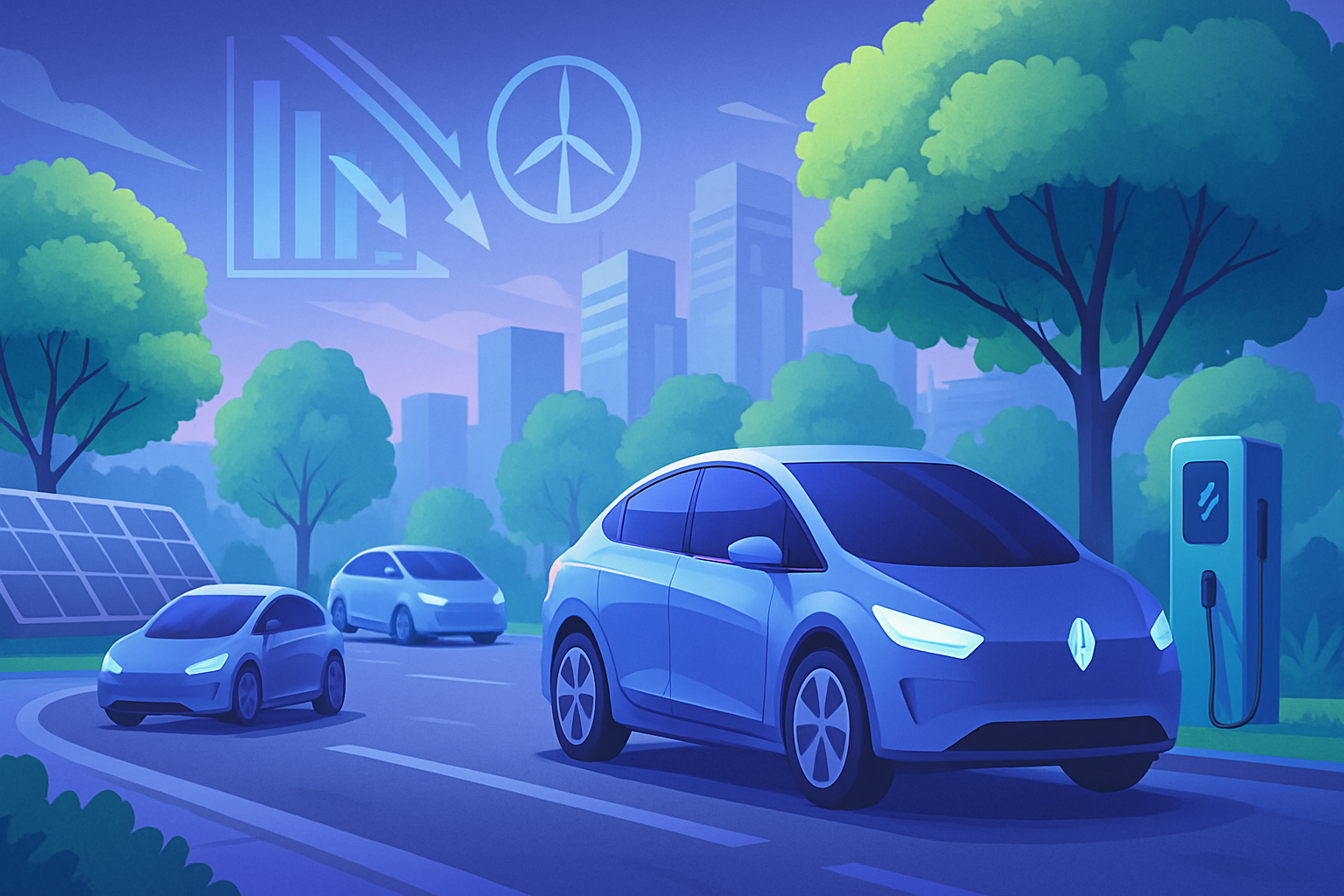Eco-driving measures represent a promising solution to reduce harmful emissions from vehicles. Through innovative strategies such as speed optimization and reducing stops, this approach can transform the urban transportation landscape. *Recent studies* reveal that *the adoption of eco-driving* could significantly lower long-neglected CO2 levels. A transition towards more responsible driving behaviors is not only beneficial for the environment but also promotes a sustainable future for public health.
The issues of signalized intersections
Motorists waiting at a red light easily understand the frustration caused by signalized intersections. This prolonged waiting time is not just a minor inconvenience; it also acts as a factor that exacerbates carbon dioxide (CO2) emissions in the land transport sector. In the United States, this phenomenon could account for up to 15% of total emissions.
Eco-driving measures
A large-scale modeled study led by researchers at MIT focuses on the impact of eco-driving measures. These measures include dynamic adjustments of vehicle speeds to minimize stops and excessive accelerations. The results, based on an artificial intelligence method called deep reinforcement learning, show significant potential for reducing CO2 emissions.
A thorough analysis
The researchers examined three major American cities to quantify the benefits of eco-driving. The study reveals that a widespread adoption of these methods could reduce carbon emissions by between 11% and 22% at municipal intersections. These reductions can be achieved without compromising road safety or traffic flow.
Emission reduction through adoption
The results indicate that an adoption rate, even limited to 10% of vehicles, could translate to a 25% to 50% reduction in emissions. Vehicles adopting eco-friendly behaviors positively influence other drivers, thereby contributing to a better balance of emissions in urban areas.
Optimization of speed limits
Researchers also discovered that dynamic optimization of speed limits at around 20% of intersections could yield up to 70% of the potential benefits regarding emissions. This approach demonstrates that eco-driving can be gradually implemented while having measurable impacts on climate change and public health.
Future perspectives
Vehicle-based control strategies, such as eco-driving, could transform the fight against climate change. The potential for implementing these technologies ranges from vehicle dashboards to smartphone applications. Ultimately, the introduction of intelligent commands could facilitate the control of accelerations in semi-autonomous and autonomous vehicles.
Technical challenges to overcome
The path towards integrating these systems comes with challenges. Researchers identified 33 factors influencing vehicle emissions, such as topography and driver behavior. Modeling over 6,000 intersections in cities like Atlanta, San Francisco, and Los Angeles has provided comprehensive simulations with promising results.
Impacts on road safety
This analysis also examined safety measures known as substitution safety measures. The results indicate that eco-driving is as safe as human driving. However, further research is needed to assess the potential impacts of unexpected behaviors in response to these new driving practices.
Towards integrated solutions
The synergy between eco-driving and other transport decarbonization solutions could offer even greater benefits. In San Francisco, a 20% adoption of eco-driving measures could reduce emission levels by 7%, increasing to 17% when considering the influence of hybrid and electric vehicles.
A promising initiative
The systematic assessment of the environmental benefits of eco-driving measures constitutes a vital first step. This work, supported notably by Amazon and the Utah Department of Transportation, serves as a strong reference for further research focused on implementing eco-driving systems. The importance of adaptive control technologies and low-consumption materials must also be highlighted.
Building on this momentum, companies are exploring the future of the automotive industry. The rise of advanced features, combined with a growing adoption of eco-responsible solutions, could transform the urban landscape, fostering a more sustainable future.
Frequently asked questions about eco-driving measures
What is eco-driving and how can it influence vehicle CO2 emissions?
Eco-driving refers to driving practices that optimize the energy efficiency of vehicles, such as adjusting speed to reduce stops and excessive accelerations, resulting in significant reductions in CO2 emissions.
What are the benefits of adopting eco-driving measures at urban intersections?
The adoption of eco-driving measures can reduce carbon emissions at urban intersections by 11 to 22%, while maintaining traffic flow and road safety.
How can AI and reinforcement methods help promote eco-driving?
AI technologies, such as reinforcement learning, enable the simulation of various traffic scenarios to optimize vehicle driving behaviors, promoting driving habits that are more environmentally friendly.
What proportion of vehicles needs to adopt eco-driving to achieve a meaningful impact on emissions?
Even if only 10% of vehicles adopt eco-driving, this could lead to a 25% to 50% reduction in CO2 emissions, due to the vehicle-following phenomenon where non-eco-driving cars follow eco-driving vehicles.
Do eco-driving measures require specific infrastructures?
No, eco-driving measures can be implemented using existing technologies, such as smartphone applications or smart dashboards, without necessitating major modifications to current infrastructures.
What challenges are associated with implementing eco-driving measures?
Challenges include the need to educate drivers about these practices, as well as ensuring that the technology is accessible and easy to understand for all users.
Can eco-driving practices interfere with road safety?
Safety measure analyses suggest that eco-driving is equal to or safer than traditional driving, but further studies are needed to assess potential impacts on the behavior of human drivers.






